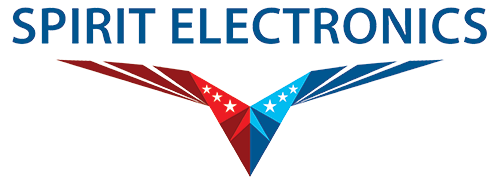At Spirit, we constantly strive to provide our customers with accurate, reliable data. We realize that our contribution to a given project may have far-reaching ramifications that continue long after we’ve sent our reports and finished our analyses. As the microelectronics failure analysis services we provide can be so vital in our customer’s process of continuous improvement, it is important to us that we ensure that our tools are up to the task of ferreting out the root cause of failure in even the most complex of devices. Many who are unfamiliar with FA are unaware of the types of tools that might be in an analyst’s repertoire; what follows is a brief overview of an analyst’s toolbox, all of which can be applied to increase understanding of a failure.
In microelectronics failure analysis, as in many things in life, seeing is believing; it should come as no surprise, then, that optical microscopy forms the backbone of many FA efforts. Careful inspection and documentation of a suspect device is critical for successful FA, and magnified optics allow analysts to identify defects that may be invisible to the naked eye. While traditional bright-field illuminated microscopy is still the cornerstone of any optical analysis, many analysts will perform false colorization of optical images, like that achieved through differential interference contrast (DIC) or light polarization, in order to reveal even further nuances of detail (for example, DIC imaging can often be used to identify damaged dielectrics on a semiconductor die). Some microscopes, like the ones used at Spirit, even offer a certain degree of automation in the photographic process, allowing analysts to acquire images with a high level of detail across an area much larger than traditionally possible with optical microscopy. Though the optical microscope is a cornerstone in any FA effort, it does have its limitations, chief amongst which is the inescapable physical limitation of diffraction: features smaller than half the wavelength of visible light cannot be resolved.
Given that many features on a semiconductor die are as much as an order of magnitude smaller than the wavelengths of light, it is necessary to use other tools to provide images of a device for failure analysis. Since the resolution limits of an optical microscope are imposed by the physical properties of light, the solution for sharper imaging was straightforward: use microscopes that do not use light to produce an image. The most obvious example of such a tool is the electron microscope, both in its transmission and scanning variants, which offer sub-nanometer resolution for identifying even the smallest of defects (for example, a gate oxide pinhole). Another example of an alternative imaging system is the atomic force microscope (AFM), which uses the forces exerted on a scanning probe by the surface of a sample to create a topographic image of a device (excellent for creating roughness profiles). Of course, once we are freed from the use of visible light to view a part, other types of imaging are possible that can reveal entirely different information about a part: x-ray and acoustic imaging both provide data about what is happening inside a packaged device, without disturbing any of the contents.
While imagery is indeed one of the key supports of a microelectronics failure analysis project, it is but one leg of the proverbial milking stool. Equally important are the tools used to confirm and isolate a given failure. Many of the tools used to confirm a failure would be immediately familiar to anyone with an electronics background – power supplies, oscilloscopes, logic analyzers, and the like. Isolation tools, on the other hand, are somewhat more specialized, and are not often seen outside of an FA lab. Tools like photoemission microscopy or Thermally Induced Voltage Alteration systems are used to identify semiconductor defects that may be invisible (at least initially) to most forms of inspection, while Time Domain Reflectometry or thermal imaging may be used to identify defects in a printed circuit assembly. Without first confirming a failure and isolating that failure to a given location, an analyst has no way to identify a site for optical inspection – or, even if a site has been identified, the analyst may not be able to positively correlate a given defect with the reported failure.
To continue with the analogy of the milking stool, the third leg supporting a microelectronics failure analysis project are the tools used for sample preparation. These tools may be chemical products used for stripping away plastic, metal, and oxide; they may be mechanical in nature, like precision CNC milling machines or ultra-fine polishing solutions; they may even sound more at home on the set of a science-fiction TV series than in a microelectronics lab, like plasma etchers that turn organic compounds into ash or focused ion beams which perform nanoscopic surgery on integrated circuits. These sample preparation instruments are a vital component in producing the data needed from an FA project; without proper sample prep, the results of an analysis are questionable at best (e.g., “Is that a defect, or a dust speck?”).
Though all the tools in the FA toolbox are important, the most vital of all is an experienced analyst who knows how to properly apply them; without the proper background, all the tools in the world will not produce an accurate, reliable analysis.

